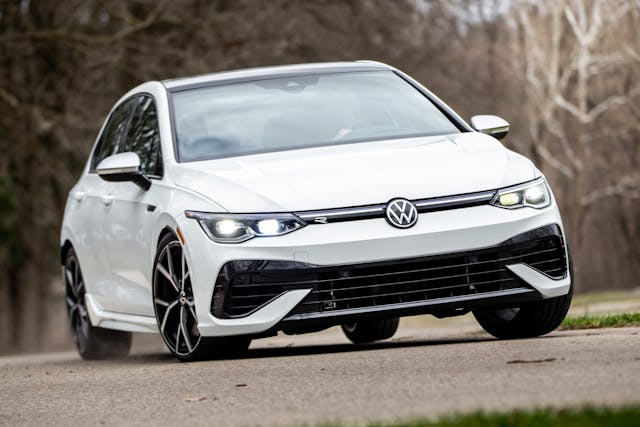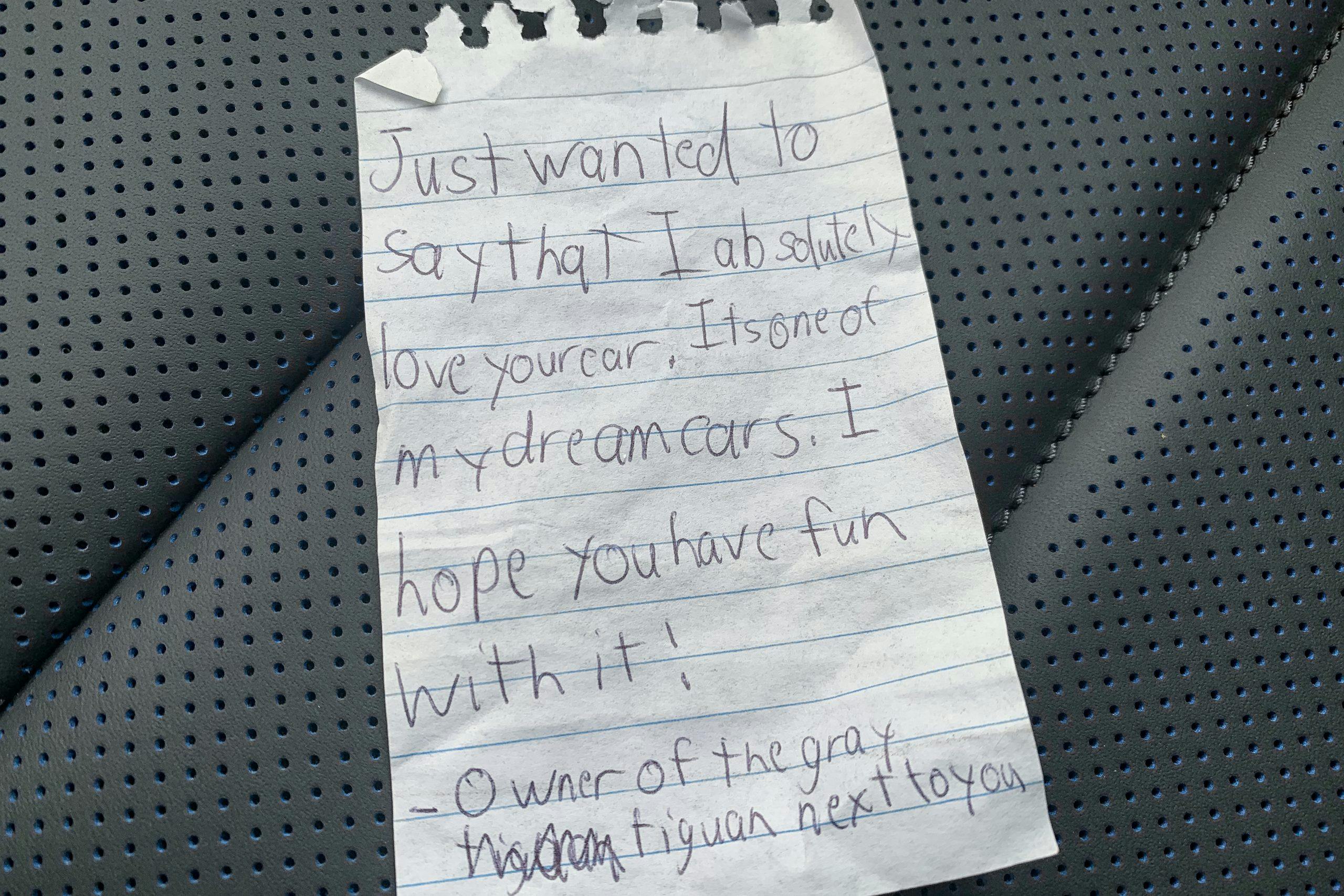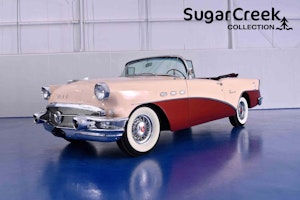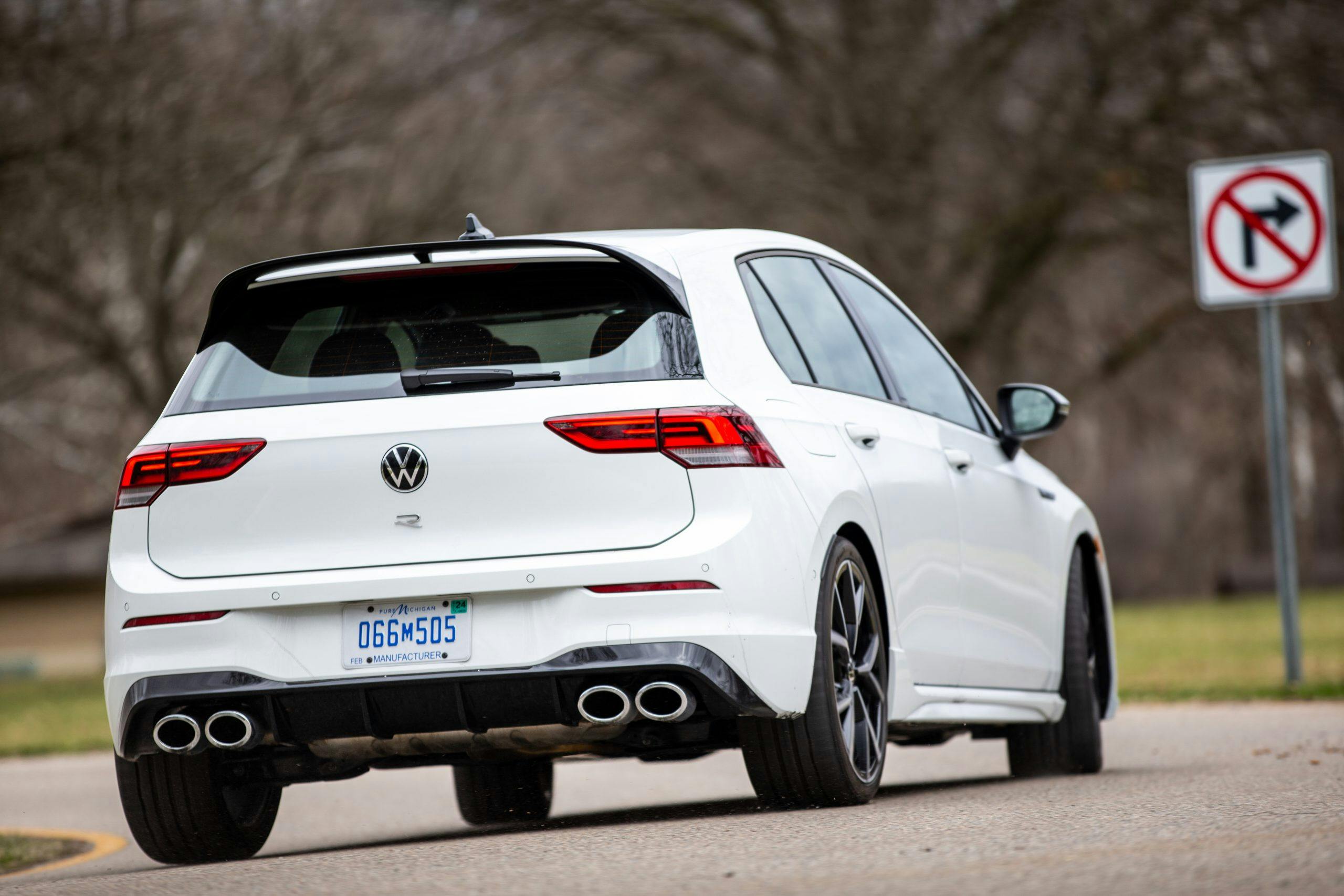Media | Articles
Review: 2022 VW Golf R 2.0T
Morrow County is home to the winding Mid-Ohio Sports Car Course. In its environs you’ll find quaint patchwork of farm roads, four-way stops, and undulating surfaces. Though these strips of pavement are more tame than the serpentine paths of the Buckeye State’s lower half, they still provoke and delight. That’s especially true behind the wheel of a Golf R, VW’s hottest—and most expensive—performance machine. All-wheel drive, 315 horsepower, 310 lb-ft of torque, slotted discs the size of Nephilim dinner plates, all bundled in a 3100-pound package—I intended to make short work of Morrow County.

While I was driving, I noticed a small piece of paper looped through the wiper blade A ticket? A note, rather. It read:
“Just wanted to say that I absolutely love your car. It’s one of my dream cars. I hope you have fun with it.”
-Owner of the gray Tigaun Tiguan next to you
Thank you, dear Tiguan owner.
Though the car is not mine personally, the compliment says a lot about the Golf R’s role in the VW lineup. It’s an exciting, aspirational vehicle that appeals most to a niche of dedicated Volkswagen fans.
Marketplace
Buy and sell classics with confidence
At present state, however, at least in America, VW is an SUV company. And the Tiguan is its best-selling model. The compact crossover and its two like-minded stablemates—the subcompact Taos and mid-size Atlas—totaled 71 percent of Vee-Dub’s U.S. sales in 2021.
On the backs of these lifted family haulers, VW appears to have finally understood Americans want. Since 2016, sales have grown from 322,000 to 366,000 in 2021, largely due to the Atlas that arrived in 2017 and the second-gen Tiguan that followed a year later. Part of this strategy was to double down on SUVs; VW axed the base Golf in America after the 2021 model year, choosing to import only the front-wheel drive GTI and the all-wheel-drive R to represent the Mark 8 Golf in stateside showrooms. If the death of an iconic, economical model such as the Golf has you asking that famous Ace question: “Hhhhooowwww Looonnng / has this been gooooing on?” then you somehow haven’t noticed the crossover’s stranglehold on customer tastes.
Meanwhile, there remains a passionate group of drivers who would much rather drive a hatchback than a subcompact crossover like the Taos. We count our readers among them, so this review is for you. (This one, too.) Our 2022 Golf R test car came dressed in coat of Pure White, replete with a black leather interior, a seven-speed dual-clutch automatic transmission, and a $995 destination charge—$45,440 out the door. That’s a hefty sticker even for a hot hatch. Let’s search for the value.
There isn’t much in the cabin, for starters. According to editor-at-large Sam Smith, the R’s interior is a step down from the previous, Mark 7 generation. As a someone who’s never sampled Golf prior to this Mark 8, I found the space to be rather handsome. It’s filled with satisfying lines, comfy seats, and exquisite materials. I guess ignorance is bliss?
The R-emblazoned front buckets are fit for track duty, offering enough mid-corner support from the bolsters, yet enough width and plush to shift about. Back seats are tight—albeit usable in a pinch—but that’s to be expected in a car this size. In contrast, the front half of the cabin feels quite spacious. A massive, curved windshield, narrow A-pillars, and large windows combine for an amphitheater-like view of the road. Plenty of helmet headroom and suitable sightlines bodes well for track rats, too. And you could haul a set of race rubber with the rear seats folded, no problem. A dialed Harman/Kardon system—with a center blaster and subs—divinely fill the space with sound. If Bose setups are hammers, this configuration is a jazz brush. Vocals, synth waves, and bass lines can be mentally isolated with ease.
Where Sam and I agree is that the touch-sensitive controls and the corresponding pads on the steering wheel significantly worsen the experience of living with this king of Golfs. More on that later.
Like a well-tailored suit, the Golf R’s curb appeal is best appreciated by its cognoscenti. In the looks department, the Golf R is much more subtle than its wild Veloster N or Civic Type R competitors. Subtle nods to let the viewer in on its performance pedigree include four chrome exhaust tips, 19-inch alloy wheels, valence-like bumpers and side skirts, blue brake calipers, and a rear wing extended from the roofline. Your car-loving friends may ogle, but highway patrol won’t look twice.
Good thing, too, because this hot-rod Golf hauls. The EA888 2.0-liter turbo-four blasts the R to 60 mph in less than four seconds, and that’s despite the engine’s palpable turbo lag. Balancing the equation is VW’s dual-clutch gearbox, a rapid-fire cog-shuffling machine that executes commands as if hardwired to the driver’s brain. A six-speed manual is also available. Operators can select from six modes: “Comfort,” “Sport,” “Race,” “Drift,” “Special,” and “Custom,” which vary in steering heft, throttle response, and shift times. The new “Drift” mode makes use of the Golf R’s torque-vectoring rear axle by sending all available torque to the outer rear wheel when cornering, while the “Special” mode slacks the suspension and optimizes the AWD torque vectoring for the hellish conditions of the Nürburgring Nordschleife. A bit corny, sure, but Easter eggs for are for the fanboys.
Regardless of modes, VW’s Haldex-based all-wheel drive system shines. In previous Golfs, the system could send up to 50 percent of the engine’s total power to the rear axle via a single multi-plate clutch. In addition to distributing drive power between front and rear sticks, the Mark 8’s system manages the aforementioned torque vectoring by using a rear diff with two electronically controlled multi-plate clutches. Mid-corner acceleration is a concerted digital effort, with all four wheels digging as dictated by a central computer crunching numbers from a variety of sensors. Bringing the whole show to a stop are the 14.1-inch front and 12.2-inch rear discs. VW’s electromechanical braking produces ideal pedal feel with a soft touch for stoplights and a strong tip-in for hairpins.
The ferocious five-door’s versatility is also its downfall, in some circumstances. There is more power and grip here than can be explored on a public road, but the weight of the sunroof will not do it any favors on track. As for the suspension, only the softest setting spares the molars on rough roads.
No element, however, is more ill-conceived than the R’s leather-wrapped steering wheel. In one aspect it’s a delicious piece that feels just as tactile for track shenanigans as a Momo Prototipo—ample chunk, comfortable grips, and a perfect diameter. However, the two lateral spokes feature a pair of plastic, touch-sensitive trackpads for cruise control, driving mode selection, menu navigation, and audio controls. If you consistently reshuffle your hands during big inputs—say, while on track or on a mountain pass—you will likely graze a button or two. An errant palm or finger might prompt a spike in volume or activate the heated wheel. If anything, this tech is better suited to VW’s relaxed, upscale Arteon.
The infotainment stack is no better. Nothing like an overly complex 10-inch touchpad display to make your 32-year-old author feel twice his age. With no real place to rest your hand or thumb, basic inputs (combined with the jostling ride) turn into the world’s most infuriating game of pin the tail on the donkey. Navigation through the submenus is logical, but I just wish there were a few more analog buttons to support quick changes mid-cruise. And should you wish to plug in a device, be sure to pack a USB-C cord. No big 3.0 ports can be be found anywhere within the cabin.
Most people can get used to all of these quirks, though they will be dealbreakers for some. Overall, there is plenty of raison d’être for VW’s all-wheel-drive buzzbomb, especially when you consider its position in the enthusiast space. Rival hatches like Veloster N and Civic Type R are both front-wheel-drive. Its platform-mate, the Audi S3, is a $10,000 more expensive sedan when comparably equipped, and it doesn’t even have the torque-vectoring rear diff. Toyota’s GR Corolla—the only vehicle similar in size, performance, and pull—hasn’t even left the assembly line. The GR Corolla’s rally roots, styling, and dual-locking-diff hardware also suggest a personality not quite as mature or refined as the Golf’s. As for the Subaru STI, it’s dead entirely.
Though the GTI checks a lot of the same boxes, the Golf R offers something special to the VW faithful. That the company takes the trouble of importing performance versions of a car it doesn’t even sell here in standard form says a lot about their enduring popularity and appeal. As long as the people that attend “Waterfests,” make daily visits to VWvortex, and leave an endearing notes under windshield wipers under Golf Rs want them, love letters like this from Wolfsburg are sure to satisfy.
***
2022 VW Golf R 2.0T
Price: $44,090 / $45,440 (base/as-tested)
Highs: Wicked fast, yet subtle in appearance. Brakes are sublime. Fantastic stereo.
Lows: Clunky touch-screen controls, tight rear seats, rigid ride.
Summary: VW’s hyperhatch will still thrill the fanbase it serves.

































































































